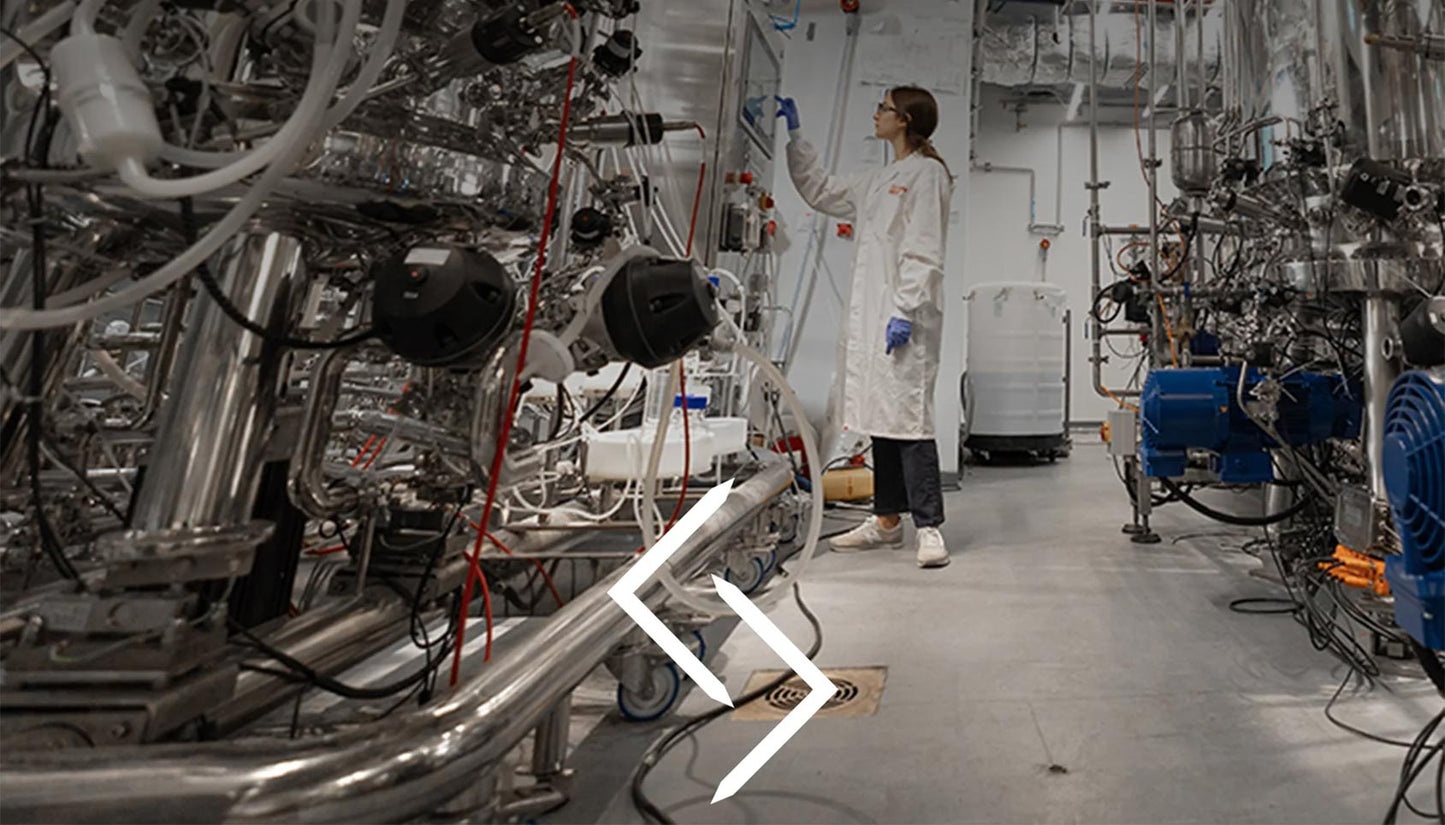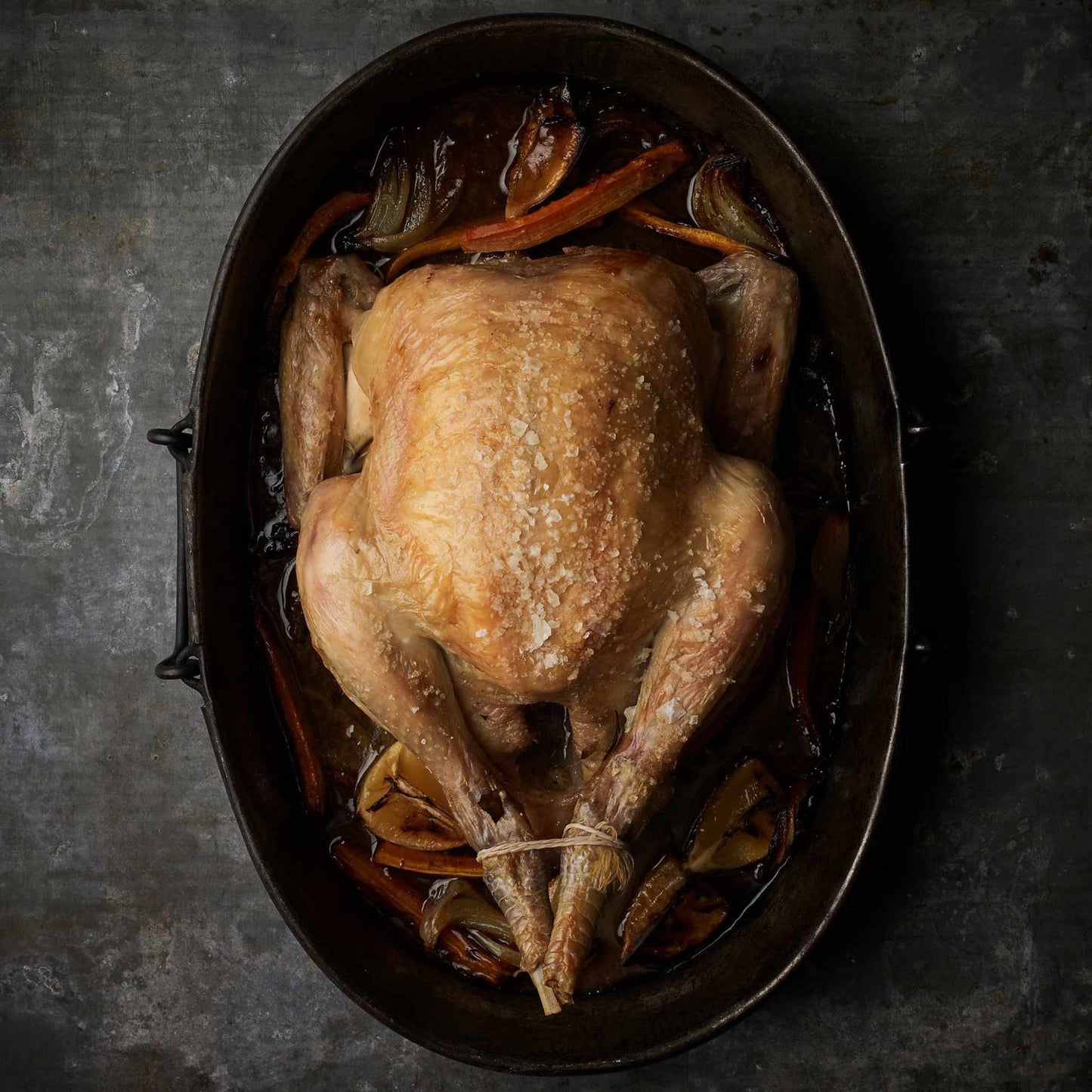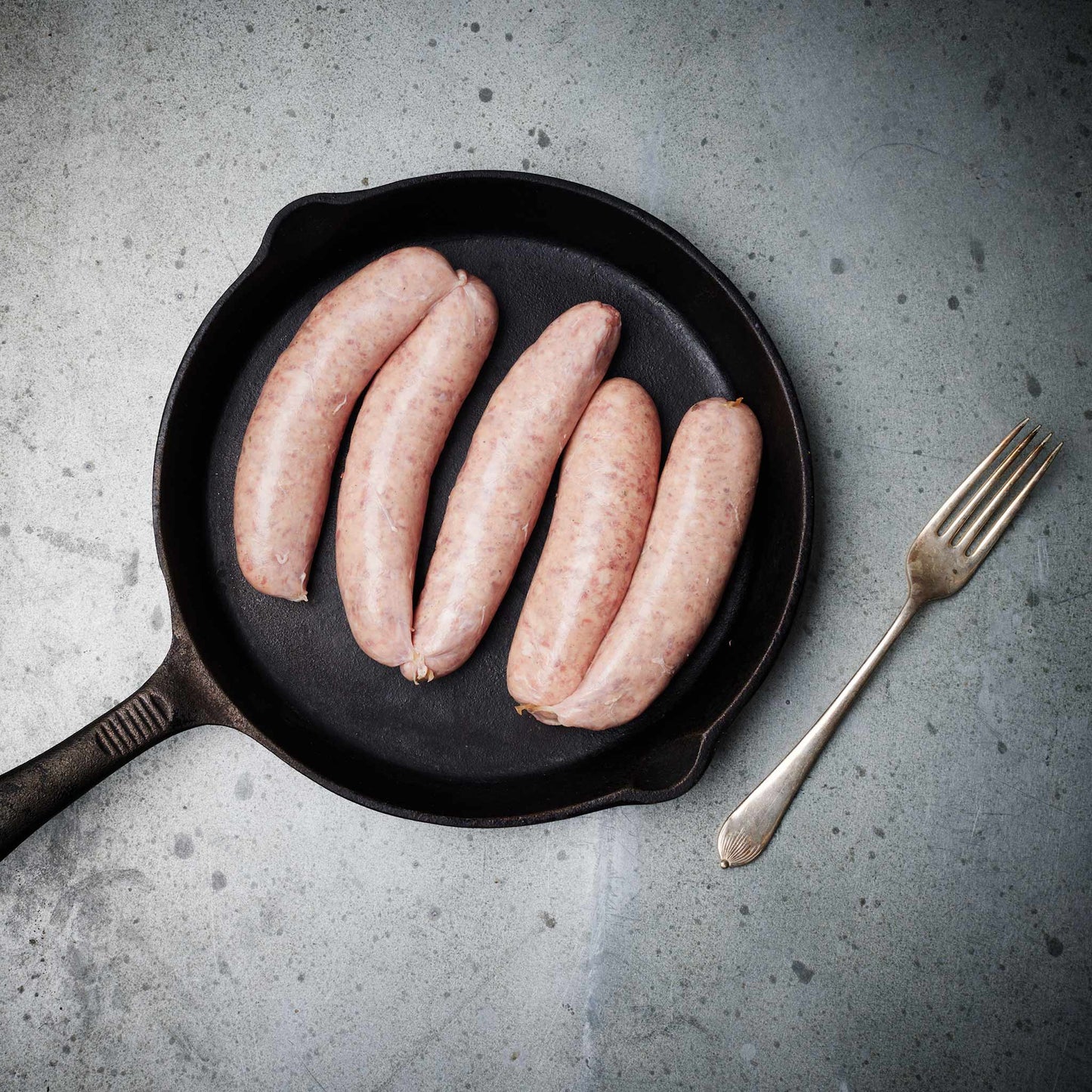We source our chicken from one farm in Leicestershire. The farm is Pasture for Life certified and rears truly free range, outdoor birds.

Lab grown meat
Throughout January, as part of our ongoing regenuary campaign, we are diving into some potential solutions to food security and regeneration. It would be disingenuous to not include lab-grown meat in the conversation as it has received significant interest from both investors and the press in recent times.
(Image is from New Future Meat Technologies production facility in Rehovot, Israel)
What is lab-grown meat?
Lab-grown meat or cultured meat is meat produced by in vitro cell cultures of animal cells. It is a form of cellular agriculture. In basic terms, stem cells of animal origin are grown in a carefully controlled environment (a lab) without being a part of a complete animal or organism.
How is it produced?
There are different ways to grow artificial meat but most use adult stem cells from a live animal. For beef, a tiny muscle sample is taken from a cow, under local anaesthesia. The muscle is chopped into smaller pieces, using enzymes to digest it and release the stem cells.
In a huge vat called a bioreactor, the stem cells are immersed in a broth containing salts, vitamins, sugars and proteins, as well as growth factors. The oxygen-rich, temperature-controlled environment allows cells to multiply dramatically. The stem cells then differentiate into muscle fibres that bunch together, aided by scaffolding material. The meat is ready for processing or cooking in a matter of weeks.
Is it safe?
Probably. In many ways, there is a lower chance of contamination from harmful bacteria such as E Coli as there is no digestive tract that could contaminate the meat during processing but the growth vats would be the perfect breeding ground for bacteria as well as muscle cells, this means that production plants have to go to great lengths to fully sterilise everything before and between growth cycles.
Lab-grown meats require hormones to stimulate growth, it could be argued that these hormones are also present in real farmed meats but the levels are likely to be different
How does lab meat compare in terms of nutrition?
Since it is grown from muscle cells it is high in complete protein and newer versions also contain fat. To some extent, the nutritional content can be tweaked by adjusting fat levels and affecting the levels of fatty acids in the final product= but these tweaks are coming from inputted materials.
Saturated fats can be replaced with other types of fats, such as omega-3s, found naturally in fish or flaxseed oil. It’s also possible to add extra micronutrients such as vitamin B12 to artificial meats.
So this sound promising, right?
It is wrongly assumed that vitamins and nutrients are single compounds that perform a particular function meaning that the artificial supplemented versions are identical to the natural counterparts but the reality is different. It is more accurate to think of a vitamin as a set of compounds that perform a similar function rather than a single molecule as each vitamin can take different forms, all of which have subtly different effects on the metabolism.
Natural vitamins come with various enzymes, minerals, lipids, protein, and other nutrients to help the body digest and utilise them. Synthetic vitamins are isolated forms of those they are mimicking and in the case of lab-grown meats where these vitamins are added, they are the synthetic versions.
When an animal lives a natural life in nature eating a proper species-appropriate diet it will take in a huge variety of material in its diet.
In the example of a pasture-fed cow, the animal could be eating up to 60 different plants all of which will contain a myriad of different saccharides, polyphenols, carotenoids, bioflavonoids and antioxidants, all of which will change subtly over the life cycle of the plant and according to the soil it grows in creating a natural feedback loop of nutrient recycling using active soil biology as bacterial, fungal and invertebrate action on decaying plant material helps to release new nutrients into future plant growth further improving the complexity if the chemical balance of the soil.

From: https://www.frontiersin.org/articles/10.3389/fsufs.2020.555426/full
In nature the delicate balance of the terroir (or specific land) adds an unfathomable complexity to the fine balance of micronutrients that an animal will receive when it derives its nutrition from that land, this complexity, including genetic information transferred from the soil microbiology, is received by our bodies on the consumption of this meat, we become intimately connected to the land and its health, the understanding of this is subject is in its infancy but the link between healthy soils and our own gut health and in turn our general health is just starting to be recognised if not yet understood.
Lab-grown meat completely bypasses nature's feedback loop.
As described above meats from a natural system interact with their environment and our bodies, in turn, become a part of this process. In many ways, industrially farmed meats (or factory-farmed) are similar to lab-grown in that the animals' feed is often very simple and one dimensional, its self a product of a reductionist approach to agriculture having been produced in a close to sterile highly controlled mono-crop system, however, with lab-grown meats the complexity is further reduced by not even containing the full animal. When an animal is kept within a natural system rather than part from its own waste products provide recycling of nutrients to the system in a symbiotic relationship that benefits the system.

Metabolites are the currency and communication for microbial communities. (B) Model laboratory ecosystems for discovering causal mechanisms of connections between genes and metabolites governing plant-microbe interactions. - From https://journals.asm.org/doi/10.1128/mBio.01175-18
What inputs does lab meat require and where do they come from?
Even when grown in a lab the cells need 'food' to grow, in a living animal this is of course supplied by digestion and transported via the bloodstream, in lab meat this food must be added artificially to the soup that the meat grows is called the 'culture medium'. The cell culture medium needs many critical components to be added including amino acids, vitamins, glucose, inorganic salts, and growth factors. The growth factors are by far the most complex and expensive component of cell culture media. The exact composition of the cell culture media is dependent on a given cell line and cell species, meaning there is no one-size-fits-all approach for the most efficient media solution.
All of these nutrients and growth factors need to be produced from somewhere so where do they and would they come from?
One company working within this sector is Future Fields who are genetically modifying a specific organism by inserting the genetic code for specific protein production into their unidentified cell line to produce different growth factors.

This product shown above is 1000X Transferrin Enriched Growth Media Supplement concentrate from Future Fields.
It's not just these supplements that are needed to encourage growth but simple foodstuffs such as sugars and the building blocks of protein, all of these need to be produced, at scale and these will come from agriculture.
For cultured meat to be grown the nutrients will have to be processed from crops that will be grown conventionally at scale in mono-crop systems, these systems are not natural and if non-organic (which ironically requires animal waste) will be chemically dependent crops.
Plant-derived materials require chemical modification (for example, by the addition of an RGD peptide) or coatings of animal-derived materials in order to facilitate cell adhesion. A study published this year successfully used textured soy protein as a scaffold for co-cultured bovine skeletal muscle.
So we would need to grow more soy to create lab-grown meat.
Production of these input chemicals will be an environmental disaster!
But surely the emissions will be lower?
Lynch and Pierrehumbert (2019) compare the GHG emissions of cultured meat production to three different beef production systems. Cultured meat emissions are made almost entirely of CO2 from energy generation, and because CO2 remains longer in the atmosphere than methane or nitrous oxide emitted by conventional meat production. Hence, they find that in the long term, cultured meat may even generate more climate damage than beef.
What about other emissions such as wastewater?
As cells grow within this growth medium their metabolism produces waste products such as ammonia compounds that need to be removed, in a living organism such as cow on pasture this is urine and to some extent faeces, both of which provide nutrients to the plants in the system as mentioned above but in a lab what happens? Because the nutrient cycle is closed the waste becomes a problem that requires being made inert through further chemical processing or disposing of and becomes a pollutant.
To sum up, is there anything good about lab grown meats?
In short, it should be clear that we do not support the production of lab grown meats for many reasons.
- There is no natural interaction with an ecological system therefore it cannot be regenerative.
- Production of the facilities will require huge mounts of infrastructure and the manufacturing of this is very resource and energy heavy
- Production of input materials will come from the worst types of purely plant based agriculture that will be chemically dependent and therefore not even sustainable.
- Lab grown meats cannot offer the complexities of nutritional content of naturally reared animals.
- Lab grown meats will be a generic product much like factory farmed meats, there will be no sense of breed and terroir as there is with well farmed animals
- Since the manufacturing requires highly skilled labour this takes away the ability of farmers to earn a living by keeping animals on land which is pertinent in developing countries, the power of food security comes in to the hands of multinationals.
So what is good about it?
Maybe we should ask Elon Musk, the only place for this is perhaps Mars, on earth, we have pasture, we have arable fields that would hugely benefit from rotation into pasture, lets stop factory farming, of which this is just another form, and lean to keep animals properly, in natural systems which can restore and repair the environment and be truly regenerative.

So we have to decide, do we want our meat production to look like this (above) or this (below)




